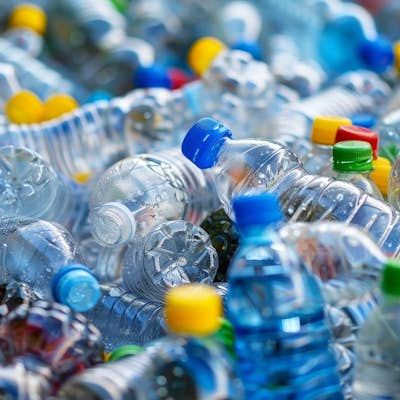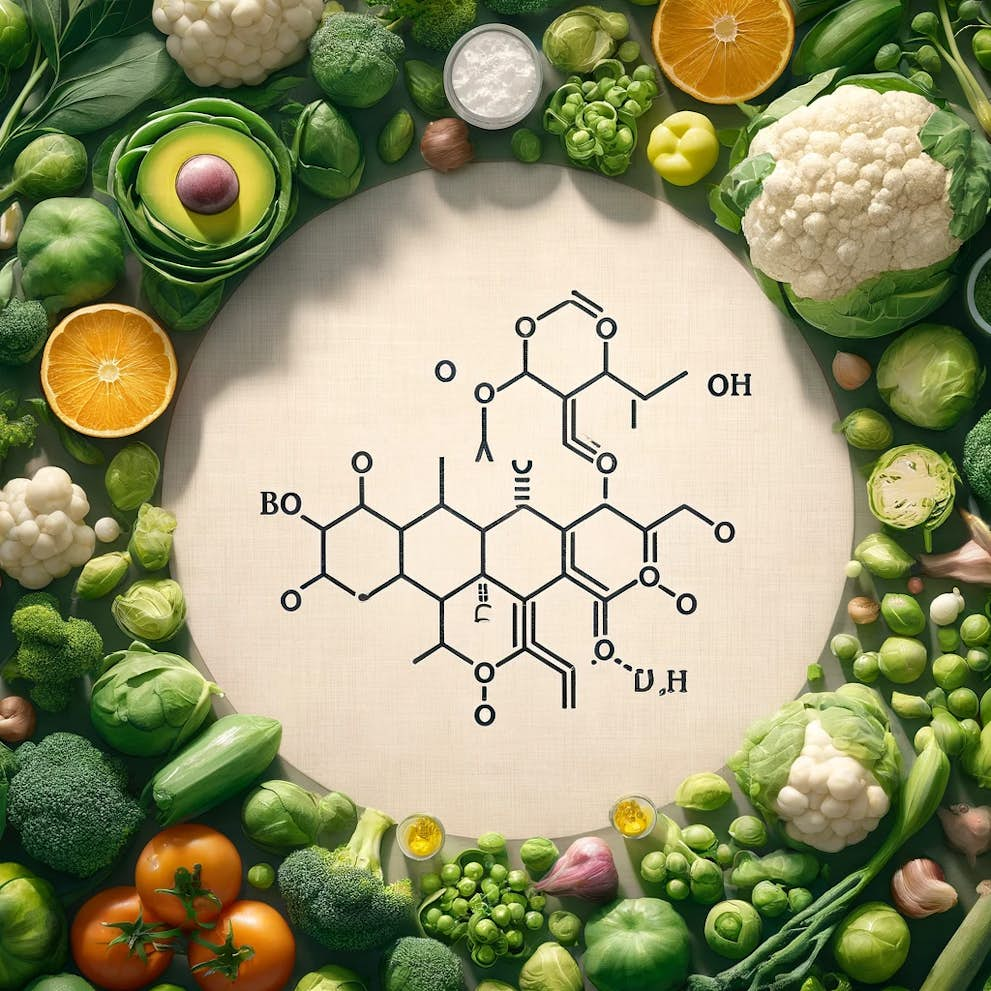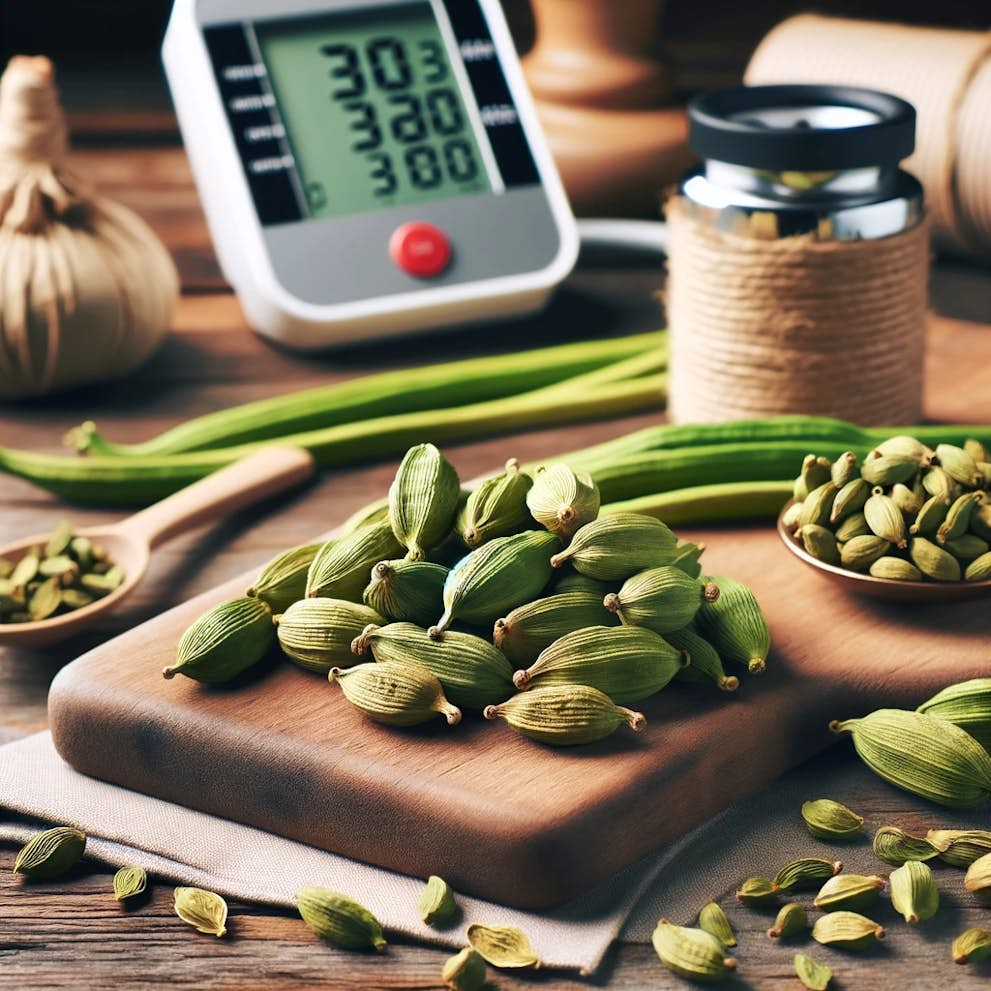
Since the 1970s the bottled water market in the U.S. has exploded, rising from 350 million gallons a year to 8 billion gallons in 2006, doubling to 16 billion gallons today. Why do people buy bottled water when all they have to do is turn the kitchen tap and out it flows, ready to drink?
For some it started in 1986 when 36 million Americans were revealed to drink water containing high levels of lead. Others were persuaded after the lead water contamination crisis in Flint, Michigan that began in 2014, or by high levels of radium reported in Texas water in 2018 or even the unfit drinking water discovered in the city of Jackson, Mississippi in 2022.
Now we have another potential crisis, but this time it’s not from tap water; it's from bottled water.
Sigh.
You see, although bottled water has an image of cleanliness and purity, is often sourced from pristine areas, and may taste better, a single liter was found to contain hundreds of microplastics. This was alarming yet it doesn't end there. A new scientific technique that can detect even smaller plastic particles found hundreds of thousands of these nanoplastics in a liter of bottled water.
Is this a health threat to worry about? Should we ditch bottled water and drink tap water instead? Are there any other options? Read on to find out how you can protect yourself.
Key Takeaways
-
Huge amounts of plastic are found in the environment, and they break down into tiny fragments called microplastics and even smaller invisible fragments called nanoplastics that we take into our bodies, mostly from drinking water.
-
Thanks to an advance in technology, nanoplastics can now be measured in water and were found at extremely high levels numbering in the hundreds of thousands in bottled water, while faucet water is expected to contain considerably less.
-
These microscopic particles can enter the bloodstream and invade all organs, tissues, and even the brain, potentially causing widespread health problems.
-
A good quality home filtration system can protect against the hazards nanoplastics may cause.
The Problem With Plastic
Plastics were introduced a little over a century ago. Because of their versatility, durability and low cost, production of these synthetic compounds continues to grow, now reaching around 400 million metric tons a year worldwide. Half of this is contained in products used once and thrown away, ending up in landfills and waterways.
Plastics such as BPA (Bisphenol A) have been linked to numerous health problems.
Unlike natural organic matter, which breaks down into relatively benign compounds, many plastics simply divide again and again. First into smaller particles called microplastics, then into even tinier particles called nanoplastics. Micro and nanoplastics have the same chemical composition as the large form they broke away from and can persist in the environment for hundreds of years.
These tiny particles are now found everywhere from Arctic snow to the ocean depths. Whether it’s tap water or bottled, sardines or scallops, apples or carrots, table salt or tea bags, there’s no getting away from them.
Shedding: Plastic Sheds Its Skin
Like skin, these tiny bits of plastic can shed during use, as explained by Sherri Mason, Associate Research Professor and Director of Sustainability, Penn State Behrend.
“People don’t think of plastics as shedding, but they do. In almost the same way we’re constantly shedding skin cells, plastics are constantly shedding little bits that break off, such as when you open that plastic container for your store-bought salad or a cheese that’s wrapped in plastic.”
Outside the fridge, plastics shed when we walk across a synthetic carpet, wash clothes, spin the wheels on the car and in multiple other ways. These tiny plastic particles end up in the air, food, and water, causing us to breathe them into our lungs and swallow them into our stomach.
In 2018 it was estimated that on average a person ingests over 5,800 micro/nano particles of synthetic debris each year, with the largest contribution - over 88 percent - via drinking water. That is a shocking statistic!
Size Matters: Microplastics vs. Nanoplastics
Microplastics are defined as any plastic particle under 5 millimeters (a fifth of an inch) in diameter. These visible particles, called microbeads (now banned in the US) are manufactured intentionally and used for commercial purposes such as personal care products and cosmetics.
Of greater concern are those we can’t or can barely see. These are created from the breakdown of larger plastic items and can be as small as 1 micrometer/micron, which is a millionth of a meter or 1/25,000th of an inch. For comparison a human hair is 70 micrometers in diameter. Nanoplastics are anything below 1 micrometer (1,000 nanometers). Microplastics are bad enough, but nanoplastics are even worse because they can much more easily enter and invade all parts of the body.
Plastic Pollution: Microplastics in Bottled Water
Microplastics came to public attention in 2018 after a study found them in 93 percent of the 259 bottles of water purchased across nine countries. The researchers found 10.4 particles per liter for microplastics larger than 100 microns and 314 for those smaller than this. A few bottles contained thousands of particles.
Of the eleven brands tested, significant variation was found even among bottles of the same brand. Most of the contamination (54 percent) was attributable to polypropylene, which is used in bottle caps. The rest contained a variety of other types of plastic such as nylon.
Sherri Mason, who we met earlier, led the research. She said: "We found [plastic] in bottle after bottle and brand after brand.
"It's not about pointing fingers at particular brands; it's really showing that this is everywhere, that plastic has become such a pervasive material in our society, and it’s pervading water - all of these products that we consume at a very basic level.
"It's not catastrophic, the numbers that we're seeing, but it is concerning."
Some of the smaller particles found were assumed to be plastic because of the limits of technology at that time. But since 2018, technology has advanced so that nanoparticles can now be detected. The first study to demonstrate the new technology found alarmingly high levels in bottled water.
Nanoplastics in Bottled Water

The technique is called stimulated Raman scattering microscopy where samples of water are probed with two simultaneous lasers. These are tuned to make specific atoms in the particles resonate.
Developing a technique to see nanoplastics is one thing but knowing what you’re looking at is something else. So targeting seven common plastics, the researchers, from Columbia University in the City of New York, produced a data-driven algorithm to create an energetic fingerprint that can interpret precisely what is being detected and work out its size and shape.
They tested three popular brands of bottled water sold in the United States (they wouldn’t reveal which ones), analyzing plastic particles down to just a tenth of a micron or 100 nanometers in size.
Almost a Quarter of a Million Plastic Particles in Each Liter
The Columbia team detected an average of 240,000 plastic fragments ranging from 110,000 to 370,000 in each liter, 90 percent of which were nanoplastics; the rest were microplastics. This was 10 to 100 times greater than previous estimates which were based mainly on larger sizes. They also determined which of the seven specific plastics they were.
Beizhan Yan, co-author of the study published in the journal Proceedings of the National Academy of Sciences in January 2024, explained, saying, “Previously this was just a dark area, uncharted. Toxicity studies were just guessing what’s in there. This opens a window where we can look into a world that was not exposed to us before.”
PET and Polyamide Contamination Predominate
Of the seven types of plastic the highest detected was polyamide, a type of nylon. This is thought to come, ironically, from plastic membrane filters meant to purify the water before it’s bottled. Another common one was polyethylene terephthalate or PET, which is what many water bottles are made of. It enters the water as bits slough off when the bottle is squeezed, repeatedly opened and closed, or exposed to heat. Other common plastics the researchers found were polystyrene, polyvinyl chloride and polymethyl methacrylate, all used in various industrial processes.
Of interest and concern is that the seven plastics they targeted accounted for only about ten percent of all the nanoparticles found in the samples. As for the rest of the particles, what they are is anybody’s guess; the researchers themselves had no idea. If they are all nanoplastics they could number in the tens of millions per liter! Then again, they could be organic matter. As the researchers wrote, their findings are indicative of “the complicated particle composition inside the seemingly simple water sample.”
Despite the scientists' findings, the International Bottled Water Association (IBWA) staunchly defended their product, saying there’s no scientific consensus on the potential health impacts of micro and nanoplastics and that they're found in thousands of food products as well as the soil and air.
Problems with bottled water are clear to see but is tap water any safer?
Nanoplastics in Drinking Water
The Columbia team plan to look at tap water in future research but there will almost certainly be far less nanoplastics in tap water because there are far less microplastics in tap water.
For example, one study found 22 times more plastic particles in a liter of bottled water compared to tap water. The Environmental Working Group (EWG), an independent nonprofit research organization, writes: “On average, bottled water contains about 60 times more microplastics than tap water.”
60 times? That's a dramatic and scary difference.
A review of 21 studies found bottled water was more contaminated than tap water, which indicates a high removal rate of microplastics in drinking water treatment plants. The researchers concluded by writing: “This evidence should encourage consumers to drink tap water instead of bottled water in order to limit their exposure to microplastics.”
The advice to drink tap water would only be sound if exposure to tiny plastic particles in bottled water presents a health problem, and even if it does, does it outweigh the harm caused by pesticides, heavy metals, radioactive materials and “forever chemicals” in tap water? It's a question that researchers are just beginning to try to answer.
Nanoplastic Particles And Your Health

Nanoplastics are so tiny they haven’t been detected in human tissue. The new detection technique should change this, but currently scientists are drawing no definite conclusions as to whether nanoparticles damage our health. From where we sit, it's just a matter of time because there are many reasons to be concerned about these tiny plastic particles in your body.
Plastic Particles Found in Organs and Blood
In 2018 researchers analyzed stool samples from a small number of people across the world. Every single sample tested positive for the presence of microplastics 50 to 500 microns in size, and up to nine different plastic types were identified. Philipp Schwabl at the Medical University of Vienna, who led the research, explained, saying, "This is the first study of its kind and confirms what we have long suspected - that plastics ultimately reach the human gut."
“Of particular concern”, he continued, “is what this means to us, and especially patients with gastrointestinal diseases.”
In 2022 scientists found 39 different types of microplastic greater than three microns in the lungs of living people. In the same year microplastics and nanoplastics greater than 700 nanometers were found in the blood for the first time. PET, polystyrene, polyethylene and other polymers were found in 17 out of 22 healthy people. Microparticles have also been detected in the liver, kidneys, breast milk and placental tissue.
Having confirmed plastics enter human blood and organs, we need to know whether they have the potential to cause harm. Evidence for this comes from lab work.
Harmful in Laboratory Studies
The smaller the particle, the more easily it can invade our bodies. Nanoplastics are so tiny they can pass through the intestines and lungs into the bloodstream. Once in the bloodstream they can be distributed to any organ and invade individual cells.
How toxic these particles are to human cells will depend on factors such as their size, shape, solubility, electrical properties, how they react with surrounding proteins and fats and what chemical additives and contaminants they contain.
Although research is still in its early stages, what's been discovered is enough to cause alarm. When nanoplastics are made in the lab they’ve been shown in cellular or mice studies to:
-
cause negative changes to the gut microbiome
-
interfere with the digestive and respiratory systems
-
harm the endocrine and reproductive systems
-
impede the immune system
-
disturb the body’s metabolism
-
cause cells to self-destruct
-
disrupt fetal development
-
increase the risk of Parkinson’s disease
Research has linked nanoplastics among the pollutants that increase your risk of death.
Then there's this study...
Clinical Study: Higher Risk of Heart Attack, Stroke
At the time of this writing, a brand new study had just revealed the discovery of plastic particles within the clogged arteries of heart disease patients. The study, published in The New England Journal of Medicine, found that participants, who had undergone surgical plaque removal to unclog arteries (called endarterectomy), had high levels of plastic particles detected in the plaque. For example, 60 percent had polyethylene in the plaque removed from their arteries. As many as 12 percent also had plastic particles called polyvinyl chloride in their plaque.
And here's the kicker... the researchers in Italy found that people with these microplastics in their arterial plaque were 4.5 times more likely to have a heart attack, stroke, or die from some other cause in months following their plaque removal surgery than those who did not have plastic particles detected in their plaque.
While it's among the first studies of its kind there are sure to be more to come. Researchers believe that these tiny plastic particles can cause everything from cellular damage to inflammation. Let's take a closer look.
Oxidative Stress
Oxidative stress refers to a shortfall of antioxidants needed to mop up free radicals, which causes cellular damage. This was induced both inside and outside cells after being exposed to microplastics/nanoplastics. This suggests oxidative stress triggered by plastics is of high importance as a cause of cellular harm.
Inflammation
Inflammatory processes can be very destructive.
Low level, simmering, chronic inflammation is a recognized feature of aging. It’s concerning therefore that pro-inflammatory cytokines - signaling molecules secreted primarily by immune cells - are set in motion by nanoparticles in cell line models. Cellular responses to this and resulting tissue damage also induces inflammation.
Both oxidative stress and inflammation have been observed in fish experimentally exposed to these particles. A research review concluded by writing: “These findings demonstrate the potency of [micro/nanoplastics] to induce inflammatory cellular responses.”
Gut Health and Fat Accumulation
Bacteria and other microbes are living in our intestines and are known to play important roles, not just in gut health but also in overall health.
A study on zebrafish - which are often used as a research model because they're genetically similar to humans - found the gut microbiome was altered and the diversity of bacteria was reduced. This is highly correlated with inflammatory bowel disease. Another found their metabolism was altered in harmful ways. A third study found detrimental changes in the gut microbiomes in two wild seabird species.
Recently a model of the human gut exposed to polystyrene particles was shown to lower the numbers of beneficial bacteria and increase two disease-associated strains.
And a Harvard study of nanoplastics applied to a cell culture of the human intestinal wall found the microscopic plastics promoted inflammation, increased fat digestion by 33 percent and boosted fat absorption by 145 percent, which has implications for obesity. Inflammation also makes the gut leakier, allowing toxic substances we swallow to enter the body. A leaky gut is linked to inflammatory bowel disease, allergies, asthma, and autoimmune disorders.
Neurotoxicity
Mice orally administered with polystyrene micro/nanoparticles absorbed the nanometer sized particles - but not bigger particles - into the brain within only two hours.
A review article suggested that the toxic effect of nanoparticles can result in inhibition of enzyme activity and neurotransmitter levels in the brain and contribute to behavioral changes.
In another scientific review the researchers wrote: “The scarce but consistent evidence shows that exposure to plastic nanoparticles can indeed affect both the digestive and the nervous system. Reported outcomes include microbiota alterations, intestinal barrier permeability, oxidative stress, inflammation, neurotoxicity and behavioral disturbances.” They described the findings as “alarming”.
Despite these findings, whether nanoplastics are dangerous remains an open question. Lab created pristine polymers are uniform in size and composition. In the real world they are much more diverse, and their impact could be much more complex. Toxicity studies are needed to understand how they affect biology at the cellular level and what the long-term consequences are likely to be.
Protecting Yourself Against Nanoplastics
For those who are in the habit of drinking water from plastic bottles and want to continue to do so, to lower the risk of particles from the bottle entering the water, the bottle should be stored away from heat and sunlight and used before the sell by date, after which plastic starts to leech into the bottle. Once the bottle is opened it should be poured into a non-plastic container. This avoids continually opening, closing and squeezing the plastic bottle. If you need water on the go, a reusable stainless-steel bottle is the best option.
If you want to avoid bottled water, drinking water directly from the tap will considerably lower the intake of plastic but is not an overall healthier option as tap water contains a cocktail of over 150 unregulated contaminants.
This leaves filtered tap water as the best option. The home filtration options of choice are reverse osmosis, distillation, and ultrafiltration.
-
Reverse osmosis. This whole-house filtration system pushes water through a special membrane and several other filters to remove impurities and minerals. It’s essentially free of microbes and impurities and can filter down to 1 nanometer, so will remove all known microplastics and nanoplastics.
-
Distillation. Water is boiled, turned into steam, then cooled and returned to water. Anything that won’t turn into steam – chemicals, pesticides, minerals, living organisms – is left behind. It filters all known microplastics.
-
Ultrafiltration. This pushes water through a 0.02-micron semipermeable membrane to remove pathogens and contaminants. It is less effective at removing plastics, but it retains dissolved minerals.
Pitchers such as Brita reduce toxins such as chlorine, copper, and lead but can’t entirely remove them and they won’t be effective against most microplastics.
More detailed information about the options available can be found on the Environmental Working Group website.
Summary
Microplastics have come to our attention only recently with hundreds of these tiny plastic particles discovered in bottled water but much less so in tap water. Thanks to a new scientific process, even smaller particles called nanoplastics, which are similar in size to viruses, can now be detected in water with several hundred thousand found in plastic-bottled water. While microplastics have been detected in the blood and lungs, nanoplastics can enter cells and invade every area of the body. The jury is out on the health problems these might cause but lab research shows they harm many body systems including the brain. Reverse osmosis, distillation, and ultrafiltration systems used in your home can help protect against this threat as well as protect against chemicals in tap water.
Frequently Asked Questions
Are there nanoplastics in water?
Yes, nanoplastics are found extensively in the environment, contaminating the water, soil and air. Bottled water is no exception and they inevitably pollute tap water also, though to a lesser extent, because of the more extensive filtration processes used for water out of a faucet.
Can you filter nanoplastics from water?
A high-quality reverse osmosis or distillation system should remove all but the very smallest particles.
Does all bottled water contain nanoplastics?
Bottled water doesn’t go through an extensive filtering process and therefore every sample is bound to contain them although some may be free of microplastics as they are larger particles.
What are the harmful effects of bottled water?
Research suggests micro and nanoparticles in bottled water might harm the digestive and nervous system. In addition bottled water can contain microorganisms and chemical contaminants including endocrine disrupters. The Environmental Working Group (EWG) found 38 pollutants in 10 brands of bottled water, including chemicals linked to cancer.
BBC News Plastic particles found in bottled water 15 March 2018 https://www.bbc.com/news/science-environment-43388870
Bradley PM, et al. Environ Int. 2023 Jan;171:107701. Bottled water contaminant exposures and potential human effects https://pubmed.ncbi.nlm.nih.gov/36542998/
Columbia Climate School Bottled Water Can Contain Hundreds of Thousands of Previously Uncounted Tiny Plastic Bits, Study Finds January 8, 2024 https://news.climate.columbia.edu/2024/01/08/bottled-water-can-contain-hundreds-of-thousands-of-previously-uncounted-tiny-plastic-bits-study-finds/
EWG State of American drinking water November 2021 https://www.ewg.org/tapwater/state-of-american-drinking-water.php
Gambino I, et al. Int J Environ Res Public Health. 2022 Apr 26;19(9):5283. Occurrence of Microplastics in Tap and Bottled Water: Current Knowledge https://pubmed.ncbi.nlm.nih.gov/35564678/
Haleem N, et al. Sci Total Environ. 2024 Feb 20;912:169594. Microplastics and associated chemicals in drinking water: A review of their occurrence and human health implications https://pubmed.ncbi.nlm.nih.gov/38154642/
Huang Y, et al. Hazard Mater. 2022 Feb 15;424(Pt C):127404. Characteristics of nano-plastics in bottled drinking water https://pubmed.ncbi.nlm.nih.gov/34736178/
Leslie HA, et al. Environ Int. 2022 May;163:107199. Discovery and quantification of plastic particle pollution in human blood https://pubmed.ncbi.nlm.nih.gov/35367073/
Mason SA, et al. Front Chem. 2018 Sep 11;6:407. Synthetic Polymer Contamination in Bottled Water https://pubmed.ncbi.nlm.nih.gov/30255015/
Muhib MI, et al. Sci Total Environ. 2023 Mar 20;865:161274. Occurrence of microplastics in tap and bottled water, and food packaging: A narrative review on current knowledge https://pubmed.ncbi.nlm.nih.gov/36587673/
Qian N, et al. Proc Natl Acad Sci U S A. 2024 Jan 16;121(3):e2300582121. Rapid single-particle chemical imaging of nanoplastics by SRS microscopy https://pubmed.ncbi.nlm.nih.gov/38190543/
Marfella R, Prattichizzo F, Sardu C, Fulgenzi G, Graciotti L, Spadoni T, D'Onofrio N, Scisciola L, La Grotta R, Frigé C, Pellegrini V, Municinò M, Siniscalchi M, Spinetti F, Vigliotti G, Vecchione C, Carrizzo A, Accarino G, Squillante A, Spaziano G, Mirra D, Esposito R, Altieri S, Falco G, Fenti A, Galoppo S, Canzano S, Sasso FC, Matacchione G, Olivieri F, Ferraraccio F, Panarese I, Paolisso P, Barbato E, Lubritto C, Balestrieri ML, Mauro C, Caballero AE, Rajagopalan S, Ceriello A, D'Agostino B, Iovino P, Paolisso G. Microplastics and Nanoplastics in Atheromas and Cardiovascular Events. N Engl J Med. 2024 Mar 7;390(10):900-910. doi: 10.1056/NEJMoa2309822. PMID: 38446676. https://pubmed.ncbi.nlm.nih.gov/38446676/
Winkler A, et al. Water Res. 2019 Dec 1;166:115082. Does mechanical stress cause microplastic release from plastic water bottles? https://pubmed.ncbi.nlm.nih.gov/31542550/


